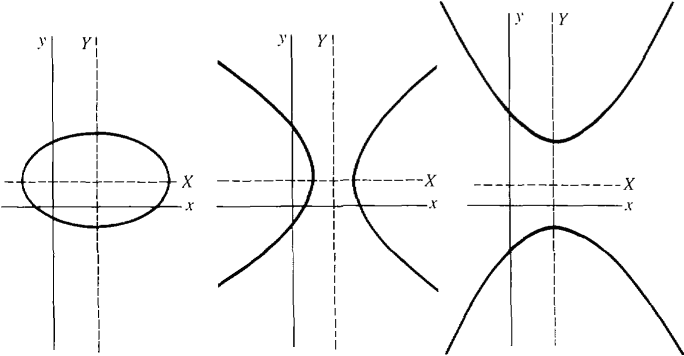| The ebook Elementary Calculus is based on material originally written by H.J. Keisler. For more information please read the copyright pages. |

|

Home  Limits, Analytic Geometry, and Approximations Limits, Analytic Geometry, and Approximations  Second Degree Curves Second Degree Curves  Translation of Axes Translation of Axes |
|






|
|
Translation of Axes
We now turn to the method of Translation of Axes. This method is useful for graphing a second degree equation with no xy-term, Ax2 + Cy2 + Dx + Ey + F = 0. If A or C is zero, the graph will be a horizontal or vertical parabola, which can be graphed by the method of Section 5.4. If both A and C are nonzero, the graph turns out to be an ellipse or hyperbola with horizontal and vertical axes X and Y, as in Figure 5.6.1. In the method of Translation of Axes, we take X and Y as a new pair of coordinate axes and get a new equation for the curve in the simple form AX2 + CY2 + F1 = 0.
Figure 5.6.1 This curve can be sketched as in Section 5.5. The name "Translation of Axes" means that the original coordinate axes x and y are replaced by new coordinate axes X and y, which are parallel to the original axes. The new axes are found using a procedure from algebra called "completing the squares." This procedure changes an expression like Ax2 + Dx into a perfect square plus a constant.
|
|
Home  Limits, Analytic Geometry, and Approximations Limits, Analytic Geometry, and Approximations  Second Degree Curves Second Degree Curves  Translation of Axes Translation of Axes |
|
Last Update: 2006-11-05


